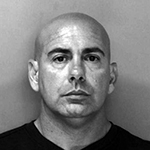Manufacturing Child Pornography
Manufacturing child pornography is prohibited under Fla. Stat. §827.071, which makes it unlawful to promote the sexual performance of a child. The statute further defines “promote” as the manufacture, sale, or distribution of this type of material, which includes any play, movie, photo, dance, or other visual representation exhibited before an audience that includes sexual conduct by a minor. Sexual conduct covers the following activities:- Sexual intercourse, whether actual or simulated
- Deviate sexual intercourse
- Masturbation
- Sadomasochistic abuse
- Bestiality
- Lewd exhibition
- Physical contact with the genitals, breasts, buttocks, or pubic area, if intended to arouse sexual desire
- Sexual battery, whether actual or simulated
Additional Offenses
Many defendants who are accused of manufacturing child pornography are also charged with additional pornography-related offenses, such as using a child in a sexual performance. Defendants can be convicted of this offense in addition to manufacturing child pornography if they employ, authorize, or force a minor to engage in a sexual performance. Parents, legal guardians, and custodians of a child who consent to their participation in a sexual performance can also be charged under this statute and face second degree felony penalties.Defendants who are charged with manufacturing child pornography may also often face additional charges for possessing and viewing child pornography. Furthermore, each photo, video, image, or computer depiction found in a person’s possession is considered a separate offense. Possessing child pornography is a third degree felony, punishable by five years in prison for each count. Finally, it is also unlawful to possess child pornography with the intent to promote it. Generally, the possession of three or more copies of a film or photo is enough evidence to justify a charge of possession with the intent to promote it.
Federal Charges
Federal law, 18 U.S. Code § 2252A, specifically prohibits the creation of child pornography by electronic, mechanical, or other means. Furthermore, the images do not need to rise to the level of showing a minor engaged in sexual conduct. Instead, federal law only requires that the subject be involved in sexually explicit conduct, which has been broadly defined as any conduct that is sufficiently suggestive. As long as an image satisfies this definition and it was transported via the internet or the mail, or was manufactured using a computer, the accused can be prosecuted in federal court. This can have serious repercussions for defendants, as violating federal law tends to have harsh consequences. For example, those who are convicted of this offense face up to 20 years in prison, unless they have a prior record involving former convictions for pornography-related crimes, in which case he or she could be sentenced to a minimum of 15 years, but up to 40 years in prison.Manufacturing Obscene Material
Under Fla. Stat. §847.011, it is considered a third degree felony to manufacture obscene material that contains images of a minor engaged in any harmful act. Obscene material is defined much more broadly than child pornography, so a child does not have to have been involved in actual sexual conduct in order for a person to be convicted of this offense. Furthermore, obscene materials can include more than just photos, films, and images, but also covers drawings, magazines, books, and recordings. For this reason, manufacturing includes a wide range of actions, including designing, copying, photographing, printing, writing, publishing, and drawing.When the material in question involves a minor, defendants are barred from raising certain defenses. For example, someone accused of manufacturing obscene material could not argue that they were unaware that the child depicted was a minor or that the minor lied about his or her age. It is also prohibited to raise as a defense that the minor consented to being involved in the depiction or that they legitimately believed that the minor was an adult.

























